dispatch 008 - absence/ longing/ saturation
The trilogy Absence / Longing / Saturation opens at V2_Lab (11 Dec–18 Jan), mapping diasporic feeling across networks and shores. In this issue I preview Affective Asymptote II – Littoral Longings: a traceroute-driven sonification of the Buenos Aires littoral, where colonial conductivity and contemporary fiber overlay the returns of the disappeared.
✦ This Haunted Inbox Where I Archive ✦
A drawer inside the cathedral. Fragments drift through. You may linger, but some things will not be explained.

For the past few months I have been sharing on this dispatches channel different stages of my work on affective logistics, latency, infrastructure and chronopolitics. From December 11th, 2025, part of this work will be in the exhibition “The Illusion of Thinking” at V2_Lab for the Unstable Media in Rotterdam. The show will be open until January 18th.
The work I will be presenting at this show, Absence / Longing / Saturation is a trilogy of sound and video works that collectively stage the recursive phenomenology of diasporic, infrastructural, and affective life. The series is organized as a triptych where each panel is formally distinct yet methodologically interlinked, charting a cycle from infrastructural absence, through mediated longing, to the fleeting excess of saturation. The works may be installed sequentially or as recursive loops, reflecting the cyclical logic of absence and return that structures migratory and familial experience. Except from the last part of the trilogy (Dirac Delta), the works can be installed individually or as part of a trilogy of works. The third part of this trilogy, if installed on its own, would risk being misunderstood and viewed as a sort of autoethnographic documentary; its strength resides in the relationship with the other two parts.
Transatlantic Drift (Absence / Opacity)
The opening work diagnoses the infrastructural wound of non-arrival. Using weather webcam imagery from Ezpeleta (the closest accessible node to my home town of Berazategui, Argentina). The soundscape for Transatlantic Drift is constructed through the simultaneous execution of multiple, discrete instances of the core generative system in SuperCollider. This technique was chosen to deliberately move the work beyond a singular, linear narrative into a complex, polyphonic field. Each layer acts as an independent voice or a ghostly echo of a journey, operating on its own timeline yet coexisting with others in the same sonic space.
Affective Asymptote (Longing / Mediation)
The second part turns to the labor of mediated connection. Through a triangulated geography of Amsterdam, Berazategui, and São Paulo (where half of my family lives), the work mobilizes archival video, network pings, and traceroutes to stage the everyday logistics of care and kinship at a distance. Longing emerges not as lack, but as infrastructural method: a topology of partial arrival, persistent negotiation, and the impossibility of closure (seeing my godchildren grow up through network mediations). The asymptote, as both mathematical figure and experiential condition, structures the work’s recursive approach to the unattainable. Every attempt at connection leaving a forensic trace of deferred, distributed presence.
Dirac Delta (δ) (Event / Saturation)
The trilogy culminates in an unrepeatable event: the chaotic, excessive, and ephemeral convergence of kinship, care, and memory in a single evening in Buenos Aires, on New Years Eve 2024. Filmed by my six-year-old godson newphew in the family backyard, the footage is presented “as is” (unprocessed, saturated, and overflowing with the noise of my family life). Here, the event is not a resolution but an eruption: for a brief instant, the logic of absence and longing is overwhelmed by the impossible fullness of presence. This moment of saturation is necessarily temporary, dissolving once more into dispersal, absence, and recursive longing.
Why this Form?
The trilogy’s tripartite structure is both experiential and formal. Rather than resolve absence and longing into a fantasy of closure, the works recursively stage the impossibility of arrival and the excess of fleeting presence. Each part operates as a diagnostic: documenting infrastructural wounds, enacting the labor of mediated relation, and finally archiving the rare event of convergence before it recedes. The cycle is recursive, not linear; each event of saturation inaugurates new circuits of absence and longing. The trilogy insists on the epistemic and affective reality of migration and diaspora where arrival is always provisional, memory is structured by infrastructural violence, and the archive is a memento of what can never be fully possessed or restored.
If the trilogy stages absence, mediated proximity, and fleeting saturation at the scale of the personal archive, Affective Asymptote II - Littoral Longings translates the same grammar to territory. It treats the Buenos Aires littoral as an acoustics of governance where conduction, enclosure, and disappearance have been historically braided. The notes below sketch the sonification method that lets this coastline “speak” through traceroutes and jitter.
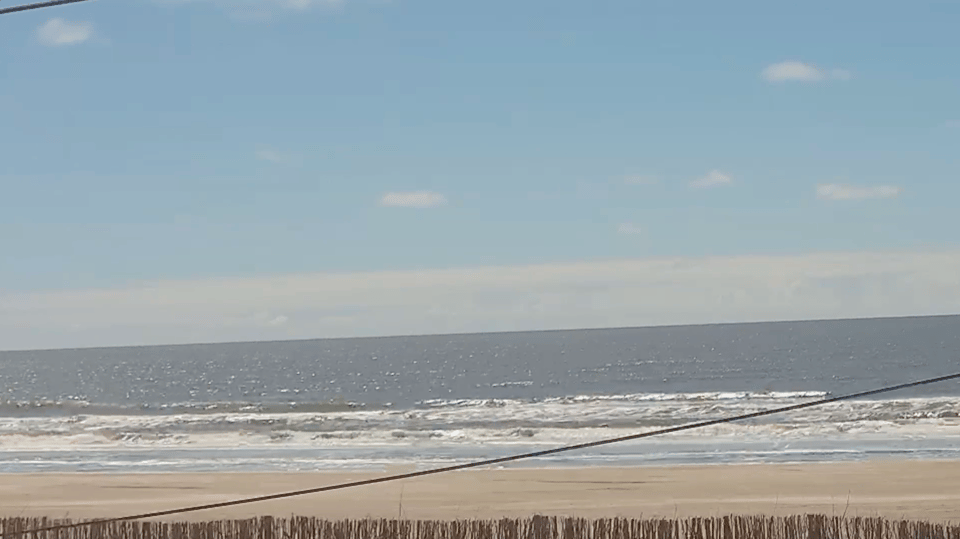
Affective Asymptote II - Littoral Longings

I. Conceptualization
Affective Asymptote II - Littoral Longings extends the trilogy's exploration of absence and connection from the scale of personal diaspora to the collective, spectral longing whose absence haunts the infrastructures of Argentine modernity. This track treats the littoral zone, specifically the coastal corridor encompassing historical telegraph landings like Punta Lara and contemporary fiber-optic hubs like Las Toninas, as a layered site of erasure. Las Toninas is a landing point for a major submarine internet cable called the Firmina, which connects the country directly to the United States, Brazil, and Uruguay. Here, successive waves of technological infrastructure have been inscribed onto territory violently 'cleaned', beginning with the foundational colonial massacres of the 16th century and later spectralized by the dictatorship's vuelos de la muerte, whose victims' bodies were returned by the sea along this littoral.
This initial 'cleaning' commenced almost immediately upon European arrival. Ulrico Schmidl, a mercenary accompanying Pedro de Mendoza's 1536 expedition that first attempted to settle Buenos Aires, provides stark testimony. He recounts how, after initial tensions with the local Querandí people over food demands, Mendoza dispatched his brother with troops under explicit orders to 'tomar presos o matar a todos estos indios carendies y de apoderarnos de su pueblo' (to take prisoner or kill all these Querandi Indians and take over their town). Schmidl, writing as a conquistador-mercenary, claims 'como mil' muertos (around one thousand dead); even allowing for exaggeration, regional historiography reads the engagement as massacre rather than battle. This foundational violence against the original inhabitants, occurring directly along the Río de la Plata littoral (Buenos Aires-Quilmes-Punta Indio), marks the violent inauguration of this territory as a colonial interface. It is worth noting that, geographically, the coastal area extends from the city of Buenos Aires, into Quilmes and further south to Berazategui (my hometown). The weathercam used in the footage of Transatlantic Drift is located in Ezpeleta (Municipality of Quilmes) due to the infrastructural absence of public cameras in Berazategui. As historian Chalo Agnelli confirms, this entire coastal zone, 'desde el Riachuelo a Punta Indio eran territorios de los querandíes y guaraníes,' (from the Riachuelo to Punta Indio were territories of the Querandí and Guaraní people) placing key infrastructural sites like Punta Lara firmly within ancestral lands. This foundational erasure preceded the later haunting by the dictatorship's vuelos de la muerte.
This littoral is not merely historically significant; it holds deep personal resonance. Punta Lara was a place I visited with my father as a child, for walks along the shore or fishing. Some of my earliest memories involve my father and uncle announcing "vamos a Punta Lara," packing the family into a precarious pick-up truck for the short trip from Berazategui. Similarly, Las Toninas and neighboring Mar del Tuyú, now crucial fiber-optic landing sites, formed the backdrop for childhood summer holidays: modest, working-class destinations visited with family, including my late aunt and uncle whose images appear in Affective Asymptote I. This personal layer of memory and loss unknowingly settled upon a territory saturated with the spectral weight of state violence and the unseen presence of global infrastructure, embody the complex entanglements of the affective littoral. The footage in Affective Asymptote I also includes images of me aboard the ferry connecting Buenos Aires to Colonia del Sacramento, tracing the route that replicates the path of the original 1866 telegraph cable connecting Argentina to Uruguay and ultimately Europe.
Domingo F. Sarmiento (1811-1888), writer, educator, and Argentine president (1868-74), translated the nineteenth-century binary civilización y barbarie (civilization and barbarism) into a program of infrastructural governance. In Facundo (1845) he described the Pampa as "un malísimo conductor" (a very bad conductor) of civilization, casting railways, schools, and especially telegraphy as moral technologies that would convert a refractory expanse into a communicative field. With Dalmacio Vélez Sársfield, he advanced the national telegraph as caminos de la palabra (paths of words), pairing wire with fence: inscription plus enclosure. This civilizing conductivity entwined communication, property, and police power forming an epistemic conquest whose coastal hinge (Punta Lara) tethered Argentina to Europe and inaugurated the littoral's layered hauntings that this work addresses. Sarmiento's thinking around telegraphy crystallized his broader project of "civilization." As Horacio Reggini shows, Sarmiento regarded the telegraph not merely as a technological tool but as a moral and political instrument that he named the "camino de la palabra" through which the dispersed and "barbaric" territory of the Republic could be made legible, governable, and modern. For him, the wire was both metaphor and mechanism: a conductive thread binding space into order, turning the open Pampa which he understood as disorderly and unproductive, into a communicative field.
As Reggini reconstructs, Sarmiento and Vélez Sársfield conceived telegraphy as a doctrine of governance: rail and wire as 'medios de acción que aceleran el movimiento de los pueblos,' (means of action that accelerate the movement of peoples) a civilizing grid that would bind an unruly expanse to state time.
Sarmiento's telegraphic project was not just a spatial intervention but a chronopolitical one: an attempt to smooth asynchronous territories into a governable timeline by accelerating movement. Telegraphy becomes a state technology of temporal unification: a chronopolitical smoothing that treats delay, opacity, and Indigenous temporalities as pathologies of 'barbarism' to be corrected by conduction.
In this matrix the fence-wire and the telegraph-wire form a single apparatus: enclosure and inscription. Hence Sarmiento's notorious conductivity metaphor 'la Pampa es un malísimo conductor' (the Pampa is a very bad conductor), sutures physics to politics: to civilize is to render territory conductive, to translate land and lives into circuits of legibility. In this sense, telegraphy enacted an epistemological conquest. The same logic that fenced land into private property also wired the nation into circuits of state control and global commerce. The coast, especially Punta Lara, where the first submarine cable landed in 1866, became the infrastructural frontier where "civilization" touched down, literally tethering Argentina to Europe.
Autopsies and forensic reconstructions document bodies of the disappeared returning along the Buenos Aires littoral (including zones like Punta Lara; later, the Atlantic corridor around the Tuyú). In this context, the dictatorship's vuelos de la muerte (death flights) in the 1970s and 1980s can be read as the necropolitical inversion of this same civilizing circuit. During the Argentinian dictatorship (1976-1983) death flights (Spanish: vuelos de la muerte) were a form of extrajudicial killing in which victims were dropped to their deaths from airplanes to dispose their bodies. As Agencia de Noticias Red Accion notes, "In December 1978, between the 16th and 20th, dozens of bodies were found on the coasts of Buenos Aires province, in towns such as San Clemente del Tuyú, Santa Teresita, Lucila del Mar, Mar de Ajó, San Bernardo, Pinamar, and Villa Gesell. [...] In San Clemente, Santa Teresita, Mar de Ajó, and nearby areas, the bodies were taken to the Dolores morgue and buried in the General Lavalle cemetery." The Rio de la Plata and the Atlantic Ocean became mass graves for political dissidents whose bodies eventually washed ashore without identification. These bodies expelled from the regime's internal network of torture, detention and control were returned by the sea near the same littoral: Las Toninas, Mar del Tuyú, Punta Lara, that had long served as portals for connection to the world. Against this horizon, the dictatorship's vuelos mark a necropolitical reversal: bodies expelled from clandestine circuits reappear along the very littoral that nineteenth-century policy tethered to Europe (Punta Lara) and that contemporary fiber consolidates (Las Toninas). The dictatorship's vuelos introduce a necro-chronopolitics: instead of accelerating life into circulation, the state expels bodies into delayed return, producing temporal haunting rather than temporal compliance. What was once smoothed becomes turbulent.
The lineage between Sarmiento's "clean lands" and the dictatorship's death flights is not hypothetical: Toribio Martinez de Hoz, Senator in Congress in 1860, was one of the most fervent proponents and defenders of Sarmiento's civilizing plans. He was also the grandfather of Jose Alfredo Martinez de Hoz, Minister of Finance of the dictatorship and whose economic plan led the country to decades long bankruptcy crisis. Under his plan, foreign capital operated unrestrictedly in the local market, obtaining exorbitant profits leading to break down of social infrastructure. Latency in this lineage is not mere metaphor: it is the slow unfolding of a history that started in the 16th century.
Even without imputing logistical design, the effect is precise: the shore becomes a negative conduit, a place where what the state seeks to submerge returns as evidence. In this reading, fiber does not overwrite but superposes: data infrastructure settling atop a coastline already wired by conquest and spectralized by disappearance.
Together, Sarmiento's civilizing telegraph and the dictatorship's logistics of disappearance delineate a recurrent translation: the recoding of violence as communicative form. What begins as the wire of Enlightenment ("el hilo de la palabra") returns, a century later, as the wire of state terror, and today persists as the optical fiber of global capital. Each layer overwrites the last without erasing it, making the Argentine littoral a layered site of connection and annihilation, where the river and sea continuously returns what the state attempted to submerge.
The work argues that technological expansion, from Sarmiento's telegraph network, which was conceived as a tool against "barbarism", to today's global fiber optics, is not neutral but complicit in, and beneficiary of, these erasures. Sarmiento himself saw the "hilo" (wire) as the instrument for transforming the territory, viewing the unfenced Pampa as "un malísimo conductor" for civilization and equating the telegraph wire with the fence wire that imposed private property and order. Technology required a "clean land," produced by violence.
To make this haunting audible, the piece sonifies traceroute data gathered by mapping network paths from Amsterdam to resonant points within this littoral geography. Using SuperCollider exclusively, the composition translates network latency, path deviations, and connection failures into a layered sonic field. This forensic sonification evokes the different strata of erasure: mechanical sounds echo the telegraph's violent territorial inscription; synthesized submerged textures, spectral wind, and fragmented static allude to the watery graves and silenced voices of the disappeared; high-frequency digital noise and interference represent the contemporary fiber layer's thin, anxious superposition over this past. The resulting soundscape stages latency, failure, and spectral interference as the audible residue of unresolved violence. The "longing" here is the persistent echo of absence within the infrastructure itself, a structural haunting that refuses erasure. My own childhood inhabitation of these sites, unaware of their historical weight, embodies this affective littoral as a space where personal memory and spectral infrastructures unknowingly coexist.
If Transatlantic Drift stages recursive deferral and Affective Asymptote I stages mediated proximity, Affective Asymptote II audibilizes the littoral's chronopolitical smoothing and its necro-chronopolitical return as superposed signal.
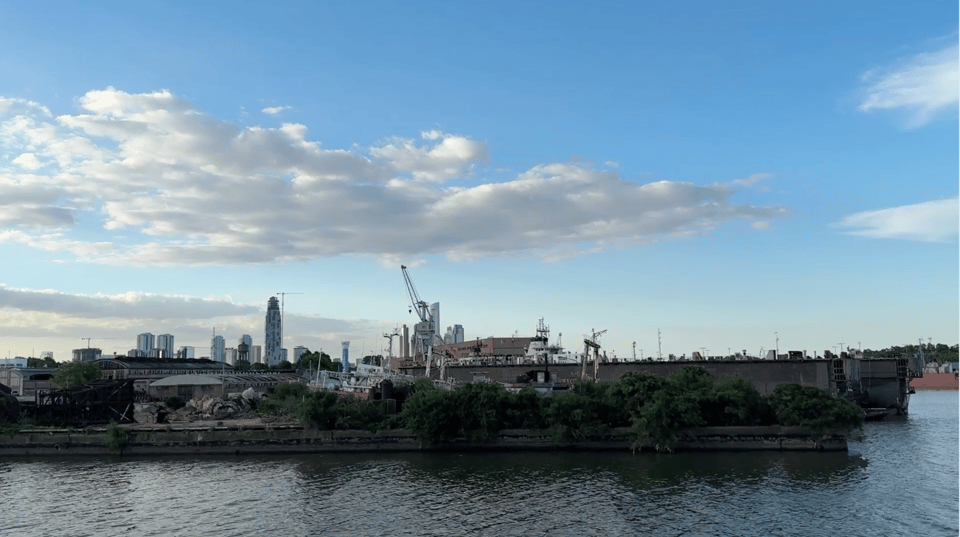
II. Data-Driven Compositional Strategy
This work is structured as a summation of the trilogy's logic. Each of the three tracks sonifies one of the trilogy's core concepts: Absence, Longing, and Saturation, using only the specific traceroute data gathered for each. The work becomes a methodological self-reflection: the three parts of the trilogy are "re-performed" not through their original materials (webcams, family video), but through the "forensic trace" of the network itself.
Track 1: Absence (Sonifying the Historical/Spectral)
● Conceptual Basis: This track mirrors Transatlantic Drift. It diagnoses the "infrastructural wound of non-arrival" and the "spectral" layer of history: the "erased populations" and contested memories.
● Data Source: Absence - Historical Sites folder.
● SuperCollider Implementation: This track is defined by failure, packet loss, and jitter. It sonifies the "infrastructural absence".
● Core Logic: The composition is driven by missing data. The script parses the CSVs and generates sound only when a hop fails (e.g., hop == -1, rtt_ms_1 == "").
● Sonic Strategy:
○ Spectral Sighs: Use the high-frequency "wind as lament" synthesis (e.g., resonant BPF on PinkNoise) but trigger it only on a hop == -1 event. The sound of absence is literally given voice by the network's failure to find the site.
○ Data Noise: Use the "high-frequency data noise" (e.g., Decimator or Dust2) to sonify the jitter (variance in RTT) for the hops that do succeed, creating a "thin, brittle" and anxious signal.
Track 2: Longing (Sonifying the Asymptotic/Personal)
● Conceptual Basis: This track mirrors Affective Asymptote. It sonifies the "labor of mediated connection" and the "asymptote" itself: the "perpetual approach... never reached".
● Data Source: Longing - Home folder.
● Core Logic (Revised): The "home" track is a unified sonification of approach (the successful traces) and failure (the infrastructurally absent sites). We do not need to check for specific filenames. The code only needs to check if the hop succeeded or failed.
● Sonic Strategy:
○ Successful Traces (The Approach): Any row with RTT data will modulate the "breathing" drone. This sonifies the "persistent negotiation" and the "labor of mediated connection" for all sites I can "reach."
○ Failed Traces (The Asymptote): Any row with a failed hop (rtts.isEmpty) will trigger the "unresolved, dissonant chord". This sonifies the "void" and the ultimate "failing": the asymptote that "can never be fully realized".
Track 3: Saturation (Sonifying the Infrastructural/Excessive)
● Conceptual Basis: This track mirrors Dirac Delta (б). It stages the "fleeting excess" and the "chaotic, excessive" event. However, it replaces the affective saturation of family with the infrastructural saturation of global capital, logistics, and state power.
● Data Source: Saturation - Infrastructure folder.
● SuperCollider Implementation: This track must be polyphonic, dense, and overwhelming, reflecting the "impossible fullness" of the network itself. The sonification "lets the infrastructure 'speak' for itself" by using its data not to trigger discrete events, but to continuously sculpt a field of raw, synthetic texture.
● Core Logic: The script spawns a persistent, independent sonic stream for each of the 14 data files. Each stream is a granular synthesizer (\granularStream) whose input is live, raw PinkNoise—the sound of the system itself. This creates a dense, "unhinged," and chaotic "wall of sound" built from the accumulation of 14 layered, evolving textures.
● Sonic Strategy:
○ Polyphonic Field of Modulated Process: Instead of discrete Pbindefs, a main Routine spawns 14 persistent Synth nodes and 14 corresponding "child" routines. Each routine loops through its own data, sending continuous .set messages to its dedicated synth. This creates a true "polyphonic field" where all 14 "forensic traces" are audible simultaneously, interfering and accumulating.
○ Live Granular Modulation: This strategy rejects external source material. The "saturation" is achieved by using the infrastructure data as a live control signal for the granular parameters. The data-driven modulation becomes the "forensic trace":
■ RTT (Latency) is mapped to \grainDur (grain duration), "smearing" high-latency traces in time.
■ Jitter (RTT Variance) is mapped to \grainRate (grain density), creating a more "anxious" and "thin, brittle" texture for unstable connections.
■ Hop Number is mapped to a filter's \cutoff frequency, sculpting the timbre of each stream.
The result is a direct sonification of "infrastructure at full capacity": an "overflowing" and "saturated" soundscape where 14 streams of data continuously sculpt a field of raw noise.
III. Index of Sonified Infrastructures
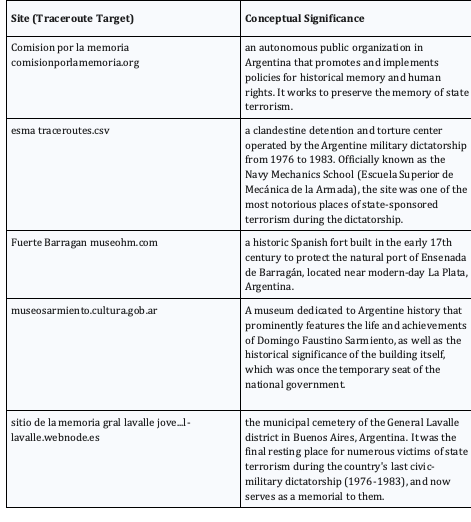
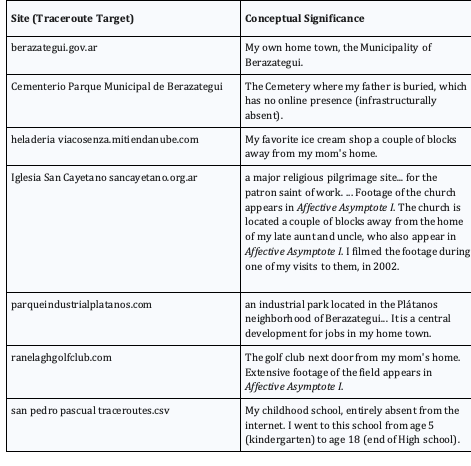
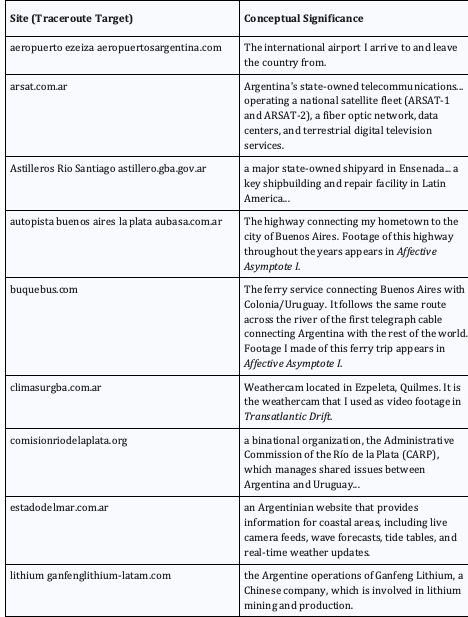
IV. A Polyphonic Field
This strategy, conceived for an edited version of the three tracks where they are all collapsed into one another, is a more radical and direct execution of the work's central thesis. All three tracks are layered, starting simultaneously but running for different, intentional durations.
This version moves "beyond a singular, linear narrative" and "effectively collapses the timeline". It does not present the cycle of absence, longing, and saturation; it enacts it as a single, "chaotic, excessive" polyphonic field. Here, the "infrastructural wound" is not a memory but a co-existent, haunting presence that "leaks into every node".
The composition of this polyphonic field is defined by its formal durational structure, which serves as a "temporal encryption" of the work's argument.
● Track 1: Absence (Full Duration: 26:00)
This track functions as the "durational field" for the entire piece. Its 26-minute length is a direct temporal encryption, first established in Affective Asymptote I, mapping one minute for each of my 26 years of absence. It is the foundational sonic ground, the "infrastructural wound" that precedes and outlasts all other gestures.
● Track 2: Longing (Total Duration: 10:12)
This track, sonifying the "labor of mediated connection", is composed of two complete "back-and-forth" executions of its code. This formal choice sonically performs the "recursive arc" and "non-teleological drift" of the migratory vector. It mirrors the structure of Transatlantic Drift to insist that longing is not a static state but a repeating, incomplete process that "refuses the teleology of 'arrival'".
● Track 3: Saturation (Total Duration: 22:00)
This track sonifies the "fleeting excess" and "impossible fullness" of global capital and infrastructure. As theorized in Dirac Delta (б), this "eruption" is "necessarily temporary".
The Formal Argument:
The work's central thesis is delivered in its final four minutes.
At the 22-minute mark, Track 3: Saturation dissolves. The "chaotic, excessive" noise of capital and logistics ceases.
For the final four minutes, Track 1: Absence plays on alone.
This staggered arrangement makes a formal, audible argument: the "impossible fullness" of saturation is fleeting, but the "infrastructural wound" of absence lingers. The work concludes by forcing the listener to stay within this remaining, unresolved sound of loss, proving that absence, not saturation, is the ultimate, persistent condition.
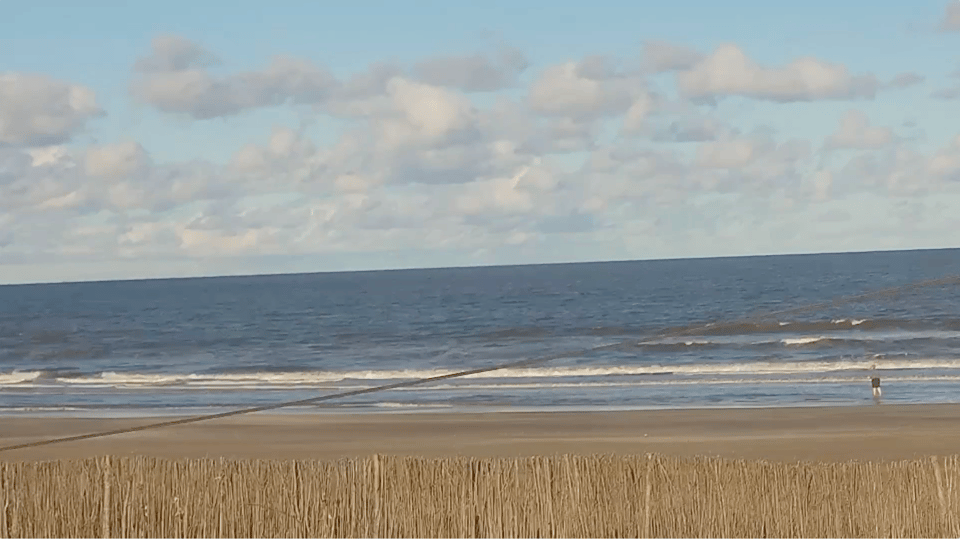
Estado del Mar
A webcam called Estado del Mar (literally state of the sea) extends the littoral’s infrastructural genealogy into the algorithmic present. In Spanish, estado oscillates between two registers: it names both the State and a condition. The title therefore encapsulates the paradox of the affective littoral: the State gazing at the sea, monitoring its turbulence, while the sea simultaneously declares its own mood, its own affective condition. The apparatus designed for surveillance and measurement becomes, unwillingly, a sensor of collective emotion.
In the lineage of Sarmiento’s telegraphic wire and the dictatorship’s necropolitical circuits, Estado del Mar represents a further mutation of this civilizing conductivity, one that transforms the coastline into a live, data-driven interface. Its feed does not transmit the word (la palabra) but the shimmer of latency itself: the light, mist, and surface agitation that refuse translation into code. Through this machine, the sea continues to perform its double role as medium and witness, conduit and archive, returning in spectral form what the State once attempted to erase.
To listen to the sea through this lens is to confront the algorithmic occupation of the coast as both a technical and emotional infrastructure. The “state of the sea” becomes not a meteorological report but a mourning transmission, an endless live feed of affective weather in which the bureaucratic gaze and the oceanic unconscious converge.
Las Toninas and Santa Teresita – Estado del Mar
A black line cuts across the sea, a remnant of the wire that once buried itself beneath this coast.
The camera transmits what it cannot see: the latency between signal and surf.
The cable, visible now, is no longer a conduit but a wound: a diagonal suture joining land to water, history to its own recurrence.
Behind it, the sea rehearses its repetitions: a surface always reporting its condition, el estado del mar, while beneath, older transmissions persist.
Each frame becomes an autopsy of connection, from the sea, to the wire, and the weather folded into a single apparatus of memory.
To look here is to watch infrastructure mourn itself, to witness the State’s gaze dissolve into the oceanic.
The camera does not show the sea; it shows the persistence of the wire that will not disappear.
When the Apparatus Thinks Back
The discovery of webcams along the Argentine littoral, including estadodelmar.com.ar, which I used as a data source for one of the 14 streams in the Saturation sonification, marked a shift in my research: a moment when the apparatus began to perform the theory it was meant to illustrate. These cameras, installed for meteorological or touristic surveillance, inadvertently enact the aesthetic and epistemic logics of the affective littoral. They reproduce the gesture of conduction and latency that I had traced from Sarmiento’s telegraphic wires to contemporary algorithmic infrastructures. In doing so, they become not objects of study but thinking surfaces: machines that reflect back the very theories they instantiate.
This recursion suggests that infrastructure possesses its own aesthetic unconscious: a capacity to generate images that mirror the conceptual conditions of their production. The webcam’s frame crossed by cables, mediated by latency, saturated with weather, renders visible the system’s self-portrait. What appears as accidental composition is, in fact, the world theorizing itself through its technical organs. The apparatus, once external to thought, becomes an auto-theoretical agent, enacting its own conditions of legibility.
To encounter these cameras, then, is to witness the return of theory from the world: a moment when the epistemic circuit closes upon itself, when seeing and knowing become coextensive. The Estado del Mar ceases to be a metaphor and it becomes the machine through which the sea, the State, and theory observe one another.
Formal Structure: The Persistence of Absence
This video work is composed to mirror the formal durational structure of the complete Affective Asymptote II polyphonic installation. The soundscape layers all three tracks (Absence, Longing, Saturation), and the Estado del Mar footage is edited to this polyphonic field.
The work’s central thesis is delivered in its final four minutes.
At the 22:00 mark, the Saturation audio track (the "chaotic, excessive" noise of capital) dissolves. Simultaneously, the Estado del Mar video feed (the "bureaucratic gaze" of the State) fades to black.
For the final four minutes, the viewer is left with a black screen, sonically inhabited only by the Track 1: Absence soundscape. This gesture provides the visual proof of the formal argument: the "impossible fullness" of both infrastructural presence and the State’s gaze is fleeting, but the "infrastructural wound" of absence lingers as the ultimate, persistent condition.
V. Bibliography
Reggini, Horacio C. Sarmiento y las Telecomunicaciones: La obsesión del hilo. Estudios 25. Buenos Aires: Academia Nacional de Educación, 2011.
Agnelli, Chalo. Desde el Riachuelo a Punta Indio eran territorios de los querandíes y guaraníes. October 2015
https://agassaganup.wordpress.com/2015/10/08/desde-el-riachuelo-a-punta-indio-eran-territorios-de-los-querandies-y-guaranies/
ANRed (Agencia de Noticias RedAcción). Laterza, Ramiro. "Diciembre 1978: cuando el mar devolvió cuerpos de los Vuelos de la Muerte." December 24, 2024. https://www.anred.org/diciembre-1978-cuando-el-mar-devolvio-cuerpos-de-los-vuelos-de-la-muerte/.
Comisión Nacional sobre la Desaparición de Personas (CONADEP). Nunca Más. Buenos Aires: EUDEBA, 1984.
Equipo Argentino de Antropología Forense (EAAF). Informe anual. Buenos Aires: EAAF, various years.
Sarmiento, Domingo Faustino. Facundo: Civilización y barbarie. 1845. Various editions.
Schmidl, Ulrico. Viaje al Río de la Plata (1534-1554). Biblioteca Virtual Miguel de Cervantes. Accessed October 2025. https://www.cervantesvirtual.com/.
"Centenario de la Campaña del Desierto." Suplemento Especial. Clarín (Buenos Aires), June 11, 1979. Local archive copy retained by the author.
Bayer, Osvaldo. "Siempre quise escribir la historia de los perseguidos." ATE (Asociación Trabajadores del Estado), December 15, 2011. Accessed October 26, 2025. https://ate.org.ar/null-7/. Local archive copy retained by the author.
Telecom Argentina / ARSAT. "Despliegue de cables submarinos en Las Toninas." Corporate infrastructure overview documents, 2001-present.